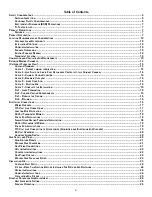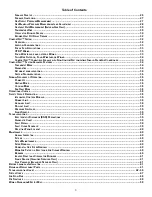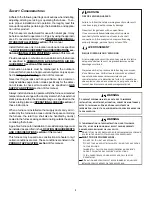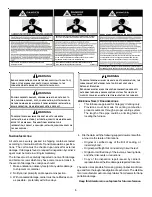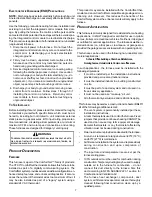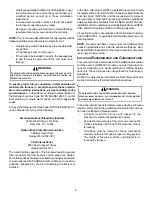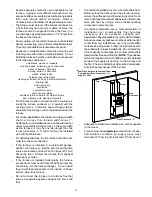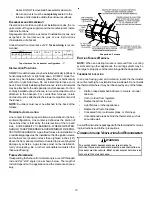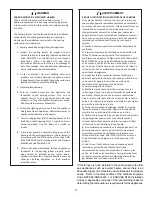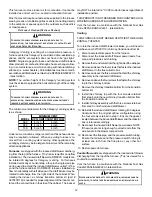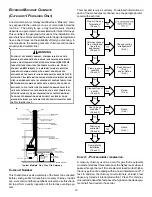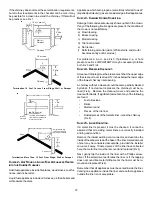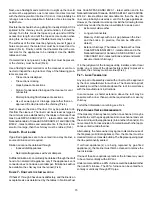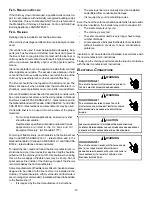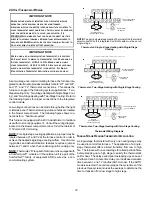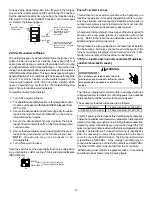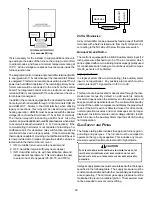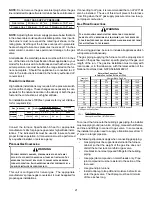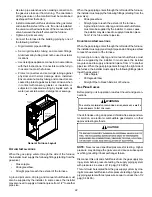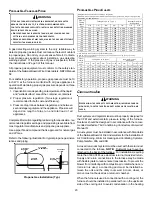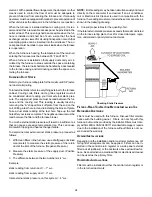
9
•
Counterflow installation over a noncombustible floor.
Before setting the furnace over the plenum opening,
ensure the surface around the opening is smooth and
level. A tight seal should be made between the furnace
base and floor by using a silicon rubber caulking
compound or cement grout.
•
Counterflow installation over a combustible floor. If
installation over a combustible floor becomes
necessary, use an accessory subbase (see
Specification Sheet applicable to your model for details).
A special accessory subbase must be used for upright
counterflow unit installations over any combustible
material including wood. Follow the instructions with
the subbase for proper installations. Do not install the
furnace directly on carpeting, tile, or other combustible
material other than wood flooring. (
NOTE
: The subbase
will not be required if an air conditioning coil is installed
between the supply air opening on the furnace and
the floor. The air conditioning coil must be downstream
from the heat exchanger of the furnace.
Top - 1"
Side
Clearance - 1"
Back - 0"
Front Clearance - 3"
Vent Pipe Clearance to Combustibles-
6" using Single Wall Connector or 1"
using B-1 vent.
•
Adequate combustion/ventilation air must be supplied
to the closet.
•
Furnace must be
completely
sealed to floor or base.
Combustion/ ventilation air supply pipes must
terminate 12" from top of closet and 12" from floor of
•
Ensure adequate combustion air is available for the
furnace. Improper or insufficient combustion air can
expose building occupants to gas combustion products
that could include carbon monoxide. Refer to
Combustion and Ventilation Air Requirements
section
.
•
The furnace must be level. If the furnace is to be set on
a floor that may become wet or damp at times, the
furnace should be supported above the floor on a
concrete base sized approximately 1-1/2" larger than
the base of the furnace.
•
Ensure upflow or horizontal furnaces are not installed
directly on carpeting, or any other combustible material.
The only combustible material allowed is wood.
•
Exposure to contaminated combustion air will result
in safety and performance-related problems. Do not
install the furnace where the combustion air is exposed
to the following substances:
chlorinated waxes or cleaners
chlorine-based swimming pool chemicals
water softening chemicals
deicing salts or chemicals
carbon tetrachloride
halogen type refrigerants
cleaning solutions (such as perchloroethylene)
printing inks
paint removers
varnishes
hydrochloric acid
cements and glues
antistatic fabric softeners for clothes dryers
and masonry acid washing materials
•
If the furnace is used in connection with a cooling unit,
install the furnace upstream or in parallel with the
cooling unit coil. Premature heat exchanger failure
will result if the cooling unit coil is placed ahead of the
furnace.
•
For vertical applications, the minimum cooling coil width
shall not be less than furnace width minus 1”.
Additionally, a coil installed above an upflow furnace or
under a counterflow furnace may be the same width
as the furnace or may be one size larger than the
furnace. Example: a “C” width coil may be installed
with a “B” width furnace.
•
For upflow applications, the front of the coil and furnace
must face the same direction.
•
If the furnace is installed in a residential garage,
position the furnace so that the burners and ignition
source are located not less than 18 inches (457 mm)
above the floor. Protect the furnace from physical
damage by vehicles.
•
If the furnace is installed horizontally, the furnace
access doors must be vertical so that the burners fire
horizontally into the heat exchanger. Do not install
the unit with the access doors on the “up/top” or “down/
bottom” side of the furnace.
•
Do not connect this furnace to a chimney flue that
serves a separate appliance designed to burn solid
fuel.


